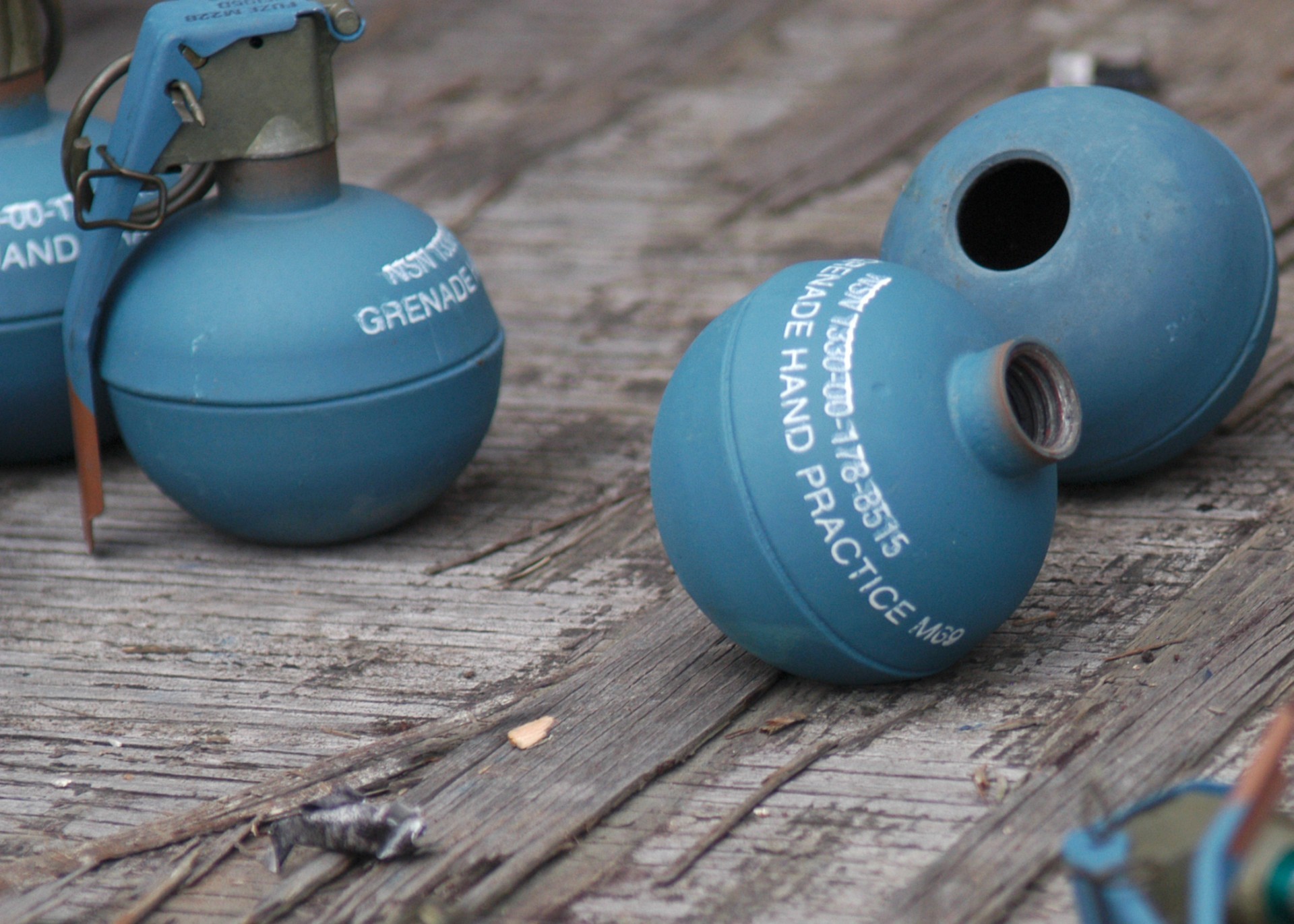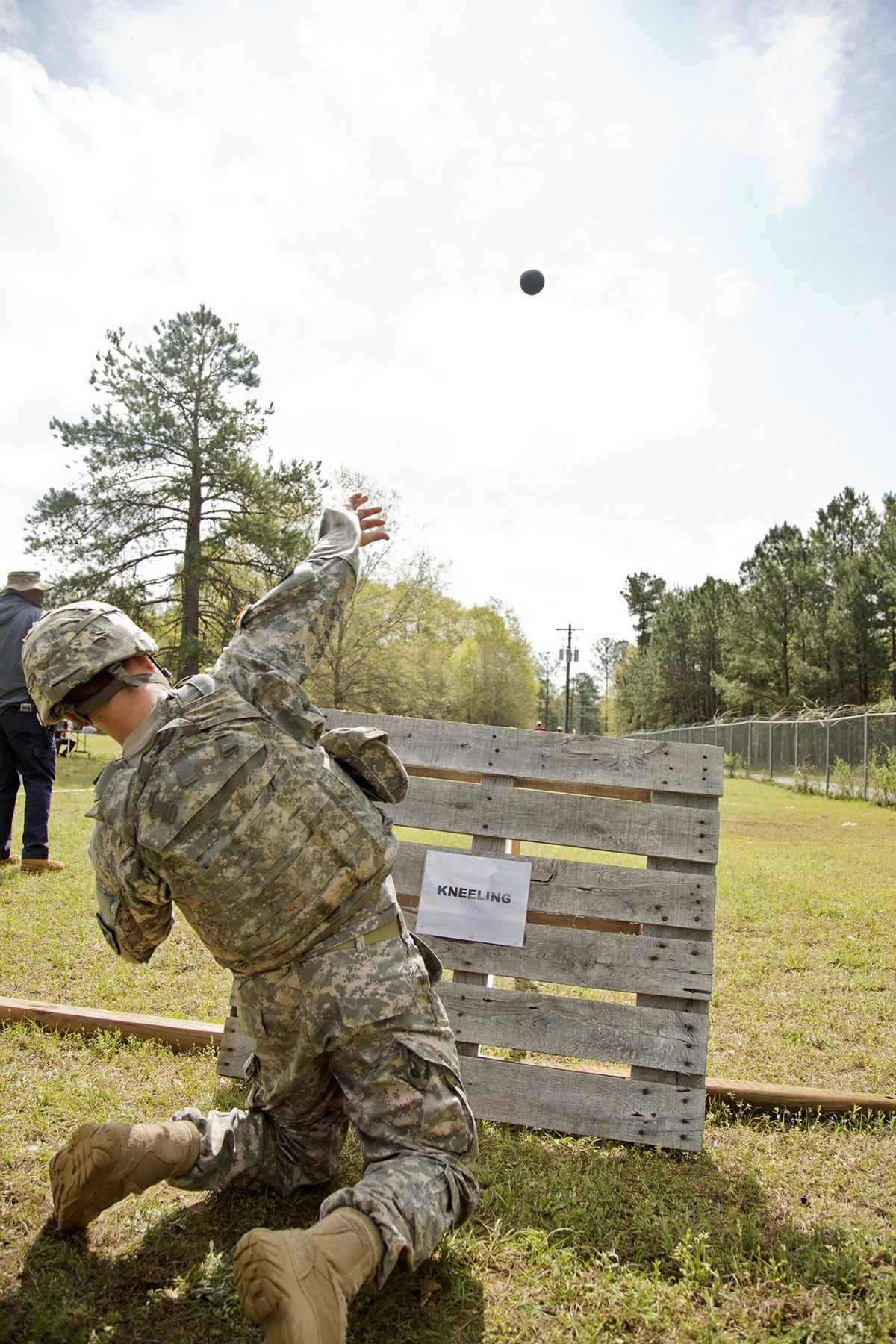ET-MP: the first anti-personnel grenade of the US Army since the days of Vietnam (replacement of the M67)

Training grenades M67. Photo: Lance Cpl. Justin J. Shemanski // US Marine Corps
The engineers of the research and production organization Picatinny Arsenal are developing a new generation ET-MP anti-personnel fragmentation grenade (Enhanced Tactical Multi-Purpose, an improved tactical multipurpose grenade ). It will replace the M67 grenade, adopted for service almost half a century ago, in 1968. The M67 mechanical detonator is practically the same as the ancient high-explosive grenades that WW1 soldiers threw into bunkers.
Grenade M67
The diameter is 6.35 cm, the length of the fuse is 9.22 cm, the mass is 396.9 g. The mass of the explosive charge is 184.3 g. The M213 fuse is used.
The radius of damage by shrapnel is 15 m, the radius of a possible defeat is 25 m.
')
The body is made of heavy metal, which is a pulverizer. The explosive is a flowable mixture of trinitrotoluene (39.4%, detonation velocity 6900 m / s) and hexogen (59.5%, detonation velocity 8750 m / s) with the addition of 1% paraffin. The total detonation velocity of this combination of explosive grenade, that is, a mixture of Composition B , is 8050 m / s.
The explosion occurs after 4-6 seconds after the release of the presser lever. Before throwing, you must first remove the safety ring, pressing the lever with your fingers to the grenade body.
War grenade is painted in olive gray color.
M67 is a kind of relic of history, which, because of its stunning simplicity and efficiency, survived until the 21st century, like other phenomenally effective Browning M2 or Bazooka M1, created in the first half of the 20th century. Until now, the M67 is the main hand grenade of the US Army. But engineers at Picatinny Arsenal offer some interesting technical solutions that can improve its design.

Soldier at the teachings of Fort. Benning throws a training grenade from a kneeling position.
ET-MP switches between two explosion modes, making it more versatile. It will have a "high-explosive" effect, which the US Army’s hand-held fragmentation grenades have lacked since the 1970s. Before throwing, the fighter chooses a grenade mode: frag or high-explosive.
Until 1975, high-explosive MK3A2 grenades were used in the US Army. Grenades of this type hit the enemy first of all with the force of an explosion, and not with splinters. In Vietnam, high-explosive grenades were so often used on the battlefield that they became the second most popular type of grenades after fragmentation, although the high-explosive grenades were originally conceived as grenades for cleaning closed premises, primarily bunkers.

High-explosive grenade MK3A2
The problem was that the MK3A2 coating was made using asbestos. As it turned out, it is extremely harmful substance by inhalation. That is, to go in and breathe air in the "cleaned" bunker was life threatening. Therefore, the MK3A2 was removed from service in 1975. Instead, she began to use stun grenades like the M84 . Now Picatinny Arsenal offers an alternative.
In addition, ET-MP should be more secure. Instead of a fully mechanical fuse, an electronic delay fuse is implemented in it. It is assumed that in the long run the electronic fuse is more reliable than the usual spring mechanism. In addition, the delay time is set and respected absolutely exactly. For example, when setting stretch marks, the detonation time can be set to a few milliseconds.
Another small advantage of ET-MP is its versatility. It is equally suitable for throwing and right-handed, with the left hand, while the M67 left-handed fighters has to be turned upside down and, holding the trigger lever with the thumb of their left hand, pull out the safety check with their right hand (at least, that's how they are taught army).

Concept grenades ET-MP. Illustration: US Army Research, Development and Engineering Command illustration
So far, ET-MP is under development. The project began in 2013. The Pentagon allocated for financing in 2017 a small by the standards of military budgets $ 1.1 million.
Picatinny Arsenal was founded in 1880 as a powder arsenal (Picatinny Powder Depot) in New Jersey. Before and after the First World War, she was engaged in the manufacture of gunpowder, and during the war she began to produce heavy ammunition. During World War II, the company grew to 18,000 people, and the company became actively involved in research. She is known for her designs, including the creation of a fuse with a delay, as well as the manufacture of special bombs for dams and oil wells, an improved bazooka during the Korean War, and a rifle lighting grenade.
This company also developed innovative manufacturing processes that were later adopted by other ammunition manufacturers. In the post-war peacetime, Picatinny Arsenal made important contributions to the development of radar, pyrotechnic devices, rocket projectiles, timer fuses, and nuclear ammunition, including the 1950s US nuclear artillery, towed by the 1950s, known as Atomic Annie . . It became the world's first model of nuclear artillery, as well as the heaviest mobile artillery model ever used by the US Army.
The company is also known for its leadership of two women lieutenant colonel .
Source: https://habr.com/ru/post/397599/
All Articles